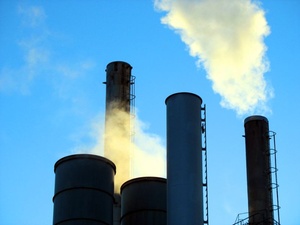The US Environment Protection Agency (EPA) proposed Tuesday a Carbon Pollution Standard for new power plants, setting the country’s first-ever national limits on how much carbon dioxide can be emitted from future coal fired energy sources.
With a limit set at 1000 lb of CO2 per MWh, equivalent to 454g CO2/kWh, of electricity generated, the Carbon Pollution Standard will prevent any new coal power plants from being built without CO2 capture and storage (CCS).
The power sector currently contributes to one third of the emissions produced by the US, with 40 percent of the power being generated in conventional coal-fired stations.
“We welcome EPA’s proposal today to limit greenhouse gas emissions from new power plants and urge the Administration to quickly move forward with rules for existing plants,” said Eileen Claussen President, Center for Climate and Energy Solutions, in a statement to Bellona.
The standard is expected to have a large impact on the overall emissions of the country and could mark the end of an era of carbon-intensive, cheap electricity and pave the way for new technologies and reduced emissions.
“Power companies face huge investment decisions as they meet new pollution standards and retire or upgrade outdated plants,” said Claussen. “They need to know the full picture – including future greenhouse gas requirements – in order to keep our electricity supply as reliable and affordable as possible.”
Requiring all new coal-fired power plants to reduce their emissions from the current average of 1,768 lb of CO2/MWh to sufficiently low levels, the standard would be a clear victory for CCS technology.
Coal as a fuel is abundant and cheap, and its contribution to the US electricity supply is not expected to end with the new standard. To ensure coal’s survival however, CCS technologies – capable of capturing 90 percent of a plant’s emissions – are required.
“This underscores the urgency of stronger public and private investment in carbon capture and storage technologies,” said Claussen.
Noting that the US has abundant coal reserves and that it is among the world’s three biggest CO2 emitters, she said, “If we can’t figure out how to get the energy value out of coal with a minimal carbon footprint, we will not solve the climate problem.”
In addition to CCS, the standard promotes electricity from fossil gas-fired power stations, which on average emit 800-850 lb CO2/MWh, almost 50 percent less than conventional coal-fired stations, and do not require any capture to meet the limits imposed by the standard.
Already operating plants and newly permitted plants where construction is scheduled to begin within the next 12 months are excluded from the standard. Currently around 20 coal plants are pursuing permits, out of which two are federally subsidised and meet the emission standard through advanced pollution controls.
The proposed rule – based on the EPA’s authority under the Clean Air Act – has been years in the making and was approved by the White House after months of review.
Before it is finalised, it will be subject to two months of public comment. The Obama administration is, according to backers of the proposed standard, committed to moving it forward and the White House is expected to usher it into law before Obama’s first term comes to an end.




